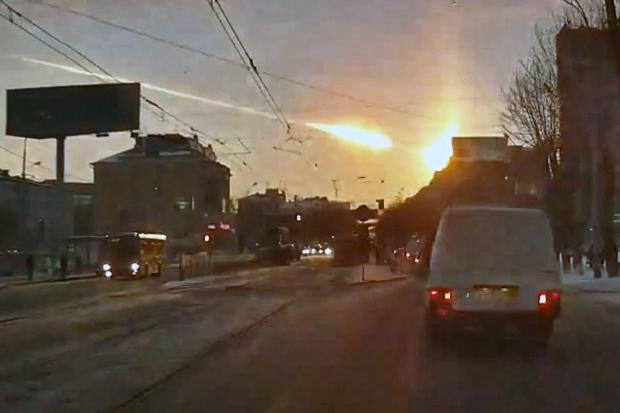A study conducted by an international team of scientists on the “superbolide meteor” which disintegrated over the Russian city of Chelyabinsk on February 15, 2013, causing hospitalisation of 1200 people and damage to several villages, established that the culprit was a space rock ust 20 meters wide.
“If humanity does not want to go the way of the dinosaurs, we need to study an event like this in detail,”warned Professor Qing-Zhu Yin of the University of California (Davis) who was among the 57 scientists from nine countries led by Olga Popova from the Russian Academy of Sciences. He described the event as “a wake up call”.
Before going into details of the study, it may be useful to clarify what seems to be a widely shared confusion about the classification of rocks raining from the sky with sizes ranging from sand pebbles to kilometers wide mammoths with potentials to cause mass extinctions. In astronomy jargon, meteoroids are objects which have not yet entered the Earth atmosphere to disintegrate. A meteor, or the “falling star” of romantic songs and dates, is an object, big or small, traversing the atmosphere and burning up with the heat of friction. Finally, meteorites, again of varying size, are the objects which survive the passage through the atmosphere and impact Earth’s surface. The distinctions help explain why the object which skimmed Chelyabinsk is alternately called with all the three names in accord with the stages of its journey.
The findings of the study show that the explosion caused by the Chelyabinsk meteoroid , largest since a large boulder exploded over Tunguska in Siberia causing extensive envronmental damage in 1908, was equal to the detonation of 600.000 tons of dynamite.
According to the details disclosed by Popova, explosion was caused by the disintegration of a single piece of 20 m sized rock at an altitude of 30 km due to friction, after entering the atmosphere at a shallow angle with a speed of 19 kilometers per second. For the nearby observers, the flash of the explosion appeared brighter than the sun and caused severe sunburns. The shockwave from the explosion reportedly caused serious damagealong 90 km wide stretches on both sides of trajectory.
The team concluded that meteor’s brightness peaked at an altitude of 29.7 kilometers, the explosion evaporating three-quarters of the original meteoroid with most of the remainder reduced to dust. Only a very small fraction, totalling four to six tons or 0.05 percent of the original mass reached the earth as small meteorites. The largest, weighing 650 kg, was recovered from the bed of Lake Chebarkul in October.
Isotopic analyses on collected meteorites showed that the object was 4.452 billion years old and had undergone a major shock from a collision 115 million years after the formation of the solar system 4.567 billion years ago. Researchers think the “shock veins” that formed within the boulder as a result of a collision hundreds of millions of years ago might have weakened the object, facilitating the explosion.
REFERENCES
- 1. “First Study of Russian Meteor”, University of California – Davis, 6 Kasım 2013

